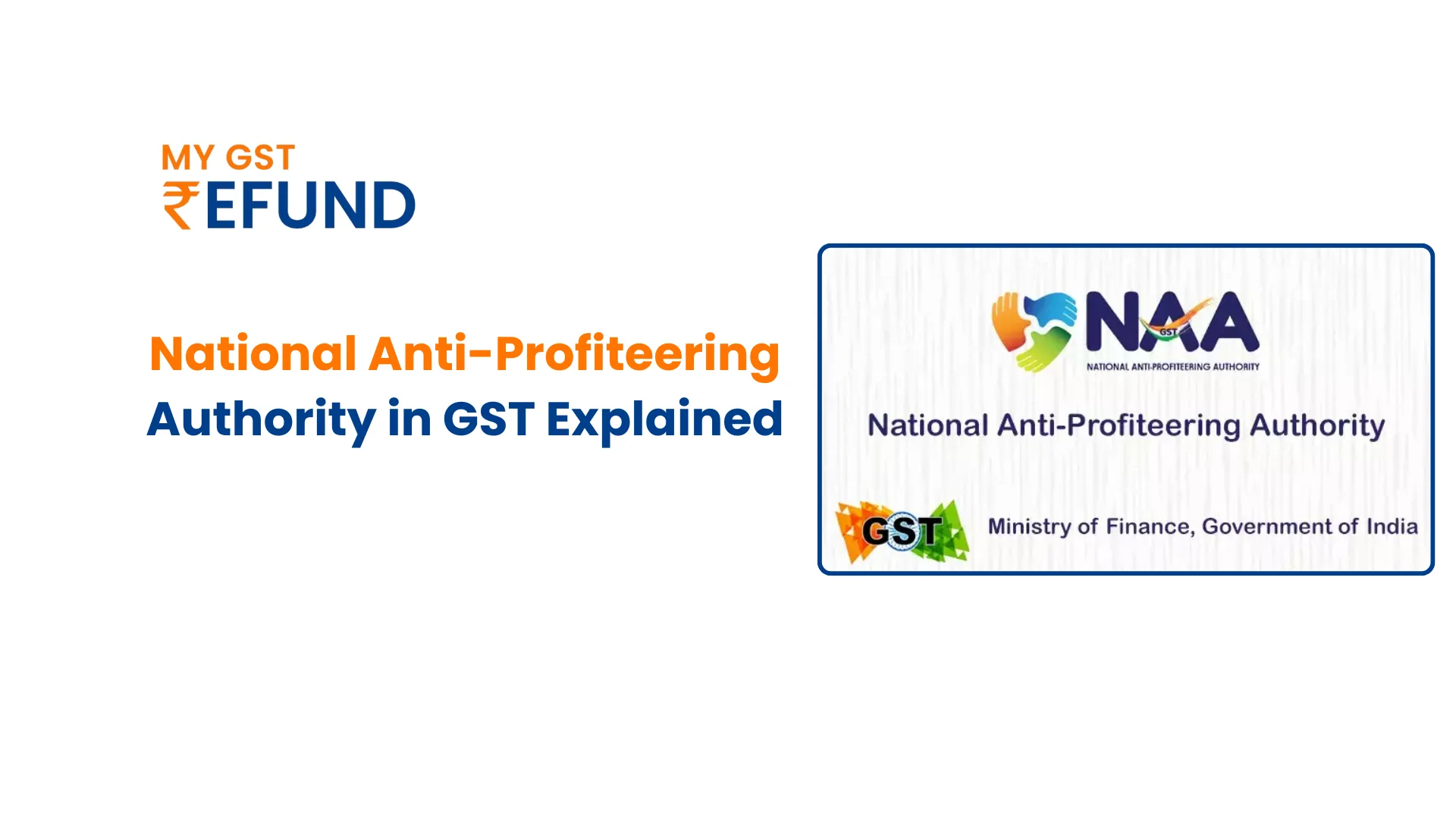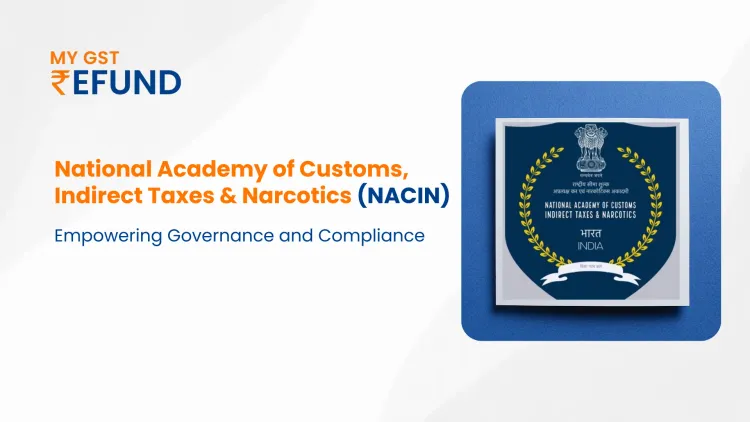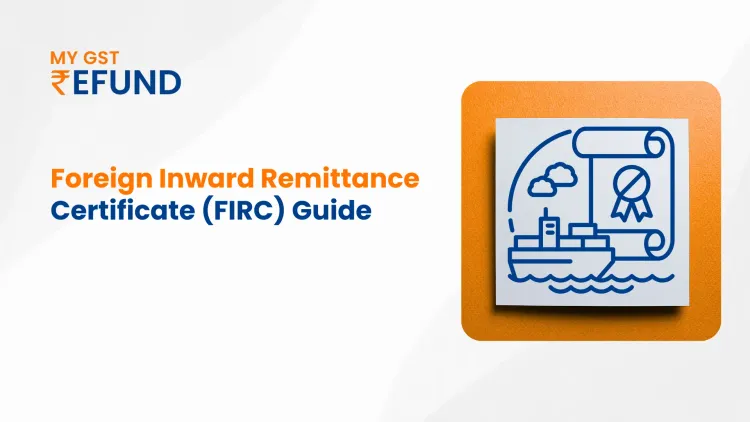National Anti-Profiteering Authority in GST
As part of the Goods and Services Tax (GST) framework, India maintains the National Anti-Profiteering Authority (NAA), which exists as a statutory organisation with its powers to oversee business profit distributions. The NAA exists to enforce that business entities who receive lowered GST rates or input tax credits should reduce their prices correspondingly. An extensive examination of the National Anti-Profiteering Authority takes place in this article detailing its organisational features along with its operational roles and its critical role amid the Goods and Services Tax framework.
Background And Objectives
The anti-profiteering provisions of GST find their basis in Section 171 of the Central Goods and Services Tax Act, 2017. Organisations must transmit both tax rate reductions and ITC benefits directly to their clients through price adjustments equal to their value. The NAA functions as an enforcement unit set up for preventing businesses from abusing tax benefits by keeping them rather than offering price reductions to consumers.
An assessment committee called NAA required establishment because it became clear that many businesses failed to offer equivalent price reductions when tax credits and rate cuts became available. Consumer exploitation and tampering with GST's basic idea to establish a fair tax system occurred due to this problem. The NAA takes action to establish fair pricing and increase consumer trust in GST taxation through its operations.
Structure And Composition
The NAA directs its activities through three main operational levels.
- State-level Screening Committee: This committee contains state and central government officers who conduct investigations to verify the presence of prima facie profiteering in reported cases. The Standing Committee receives matters from the Screening Committee after it establishes prima facie profiteering evidence.
- Standing Committee: Officers from central and state governments make up this committee, which receives Screening Committee cases before determining if DGS should perform detailed investigations.
- Directorate General of Safeguards (DGS): The DGS serves as the investigative division of NAA to carry out sophisticated fact-finding operations and evidence-gathering that they present to the NAA. The NAA conducts investigations throughout three months even though these periods can potentially extend another additional three months based on necessity.
The five-member NAA committee consists of a chairman and four technical members for its operations. Both positions within the NAA hold retired government secretaries, while technical members consist of tax officials with experience. The Additional Director General of Safeguards under the Central Board of Indirect Taxes and Customs (CBIC) serves as the secretary to the NAA .
Functions And Powers
The NAA has the authority to:
- The NAA verifies if taxpayers passed down tax rate benefits and input tax credits to customers as consumers.
- The NAA needs to detect all businesses that have ignored the rules against profiteering.
- Companies must either cut prices for goods or return profiteered funds to consumers with interest or place such funds within the Consumer Welfare Fund when completing the identities of beneficiaries is not possible.
- The GST Act specifies penalties that can lead to a severe consequence of cancelling GST registration.
The National Anti-Profiteering Authority uses a specific method to determine the profiteered amount in each case because no universal calculation system exists. Through its decision-making authority, the authority can take into account the unique aspects of each situation that include industrial norms, cost elements and market position.
Operational Mechanism Of NAA
The procedure starts after an interested entity submits a complaint. The initial evaluation of the complaint takes place at the State-level Screening Committee for determining its validity. The case proceeds from the Standing Committee toward the DGS investigation.
The DGS carries out thorough investigations by calling parties to testify and inspecting relevant documentation while obtaining expert testimonies. The DGS delivers its report to the NAA for an order that the NAA bases on its findings. The system requires a reasonable duration to resolve complaints, which rounds up to about six months for completion.
Challenges and Limitations
Despite its mandate, the NAA faces several challenges. The determination of precise profiteering amounts proves challenging because it demands thorough evaluation of business cost operations and pricing approaches. The absence of detailed regulations regarding this particular matter produces numerous interpretation problems and potential disputes between groups.
The NAA faces difficulties when enforcing its orders when businesses resist obeying directives from the organisation. The effectiveness of penalties mandated by the authority depends heavily on both business cooperative behavior and how efficiently legal regulations operate.
Global Perspective of NAA
The anti-profiteering framework implemented under the GST in India exists independently from similar mechanisms present in other nations. Australian businesses face price exploitation penalties through the Competition and Consumer Act, while Malaysian businesses must deal with price control regulations per the Price Control Anti-Profiteering Act. The NAA directs its efforts against tax benefit non-passing in India due to the distinctive hurdles that exist when implementing a unified tax system through GST.
Impact and Significance
Through its essential functions, the National Anti-Profiteering Authority protects consumer welfare and protects the GST regulatory system from abuses. Businesses now face accountability for their pricing behaviour, which in turn has brought more openness and credibility to tax system operations. The authority's work helps GST reach its goal of creating an objective tax framework that makes sure everyone in the system gets the same tax reforms.
Conclusion
The GST framework in India depends heavily on the National Anti-Profiteering Authority to enforce anti-profiteering requirements, which protect consumer value from tax reductions and ITC benefits. The authority has reached considerable milestones toward its main goals yet battles methodological calculation problems together with enforcement difficulties. The NAA needs to tackle these difficulties to make its operations more effective as well as improve the stability of the GST system.
FAQs
1. What is the National Anti-Profiteering Authority (NAA)?
The National Anti-Profiteering Authority operates as a statutory organisation established under Indian GST regulations for enforcing business price reductions stemming from tax rate reductions or input tax credit availability to prevent consumer price exploitation.
2. Why was the NAA created?
The NAA operates as a statutory organisation to stop businesses from keeping tax rate benefits and ITCs rather than transferring them to consumers, thereby producing price increases and damaging GST purposes.
3. What are the main functions of the NAA?
The NAA investigates allegations of profiteering, ensures that businesses transfer tax benefits to consumers, imposes penalties on violators, and can direct businesses to reduce prices or refund the excess amounts to consumers.
4. How does the NAA investigate profiteering?
The NAA investigates complaints from consumers, suppliers, or other parties. To investigate profiteering, businesses undergo detailed pricing practice assessments from which the NAA issues necessary corrective orders such as mandatory price reductions and refunds to consumers when a violation is confirmed.
5. What happens if a business is found guilty of profiteering?
Businesses found guilty of profiteering may face penalties, including fines, mandatory price reductions, refunds to consumers, or even the cancellation of their GST registration, depending on the severity of the violation.
Also Read : GST Anti-Profiteering: Fair Pricing & NAA Role
Related Posts








